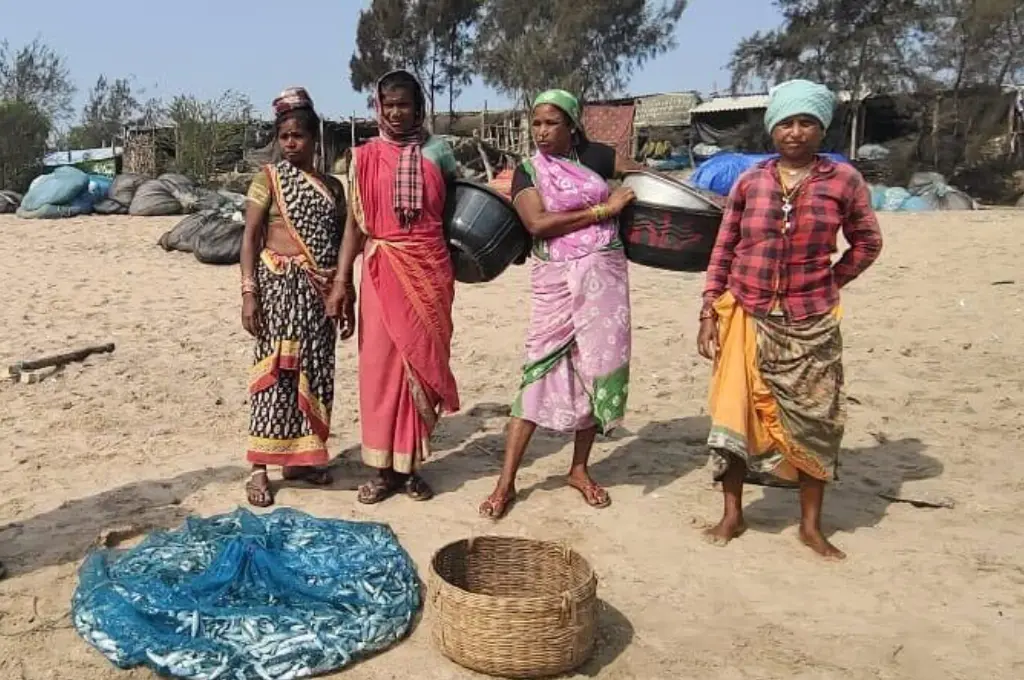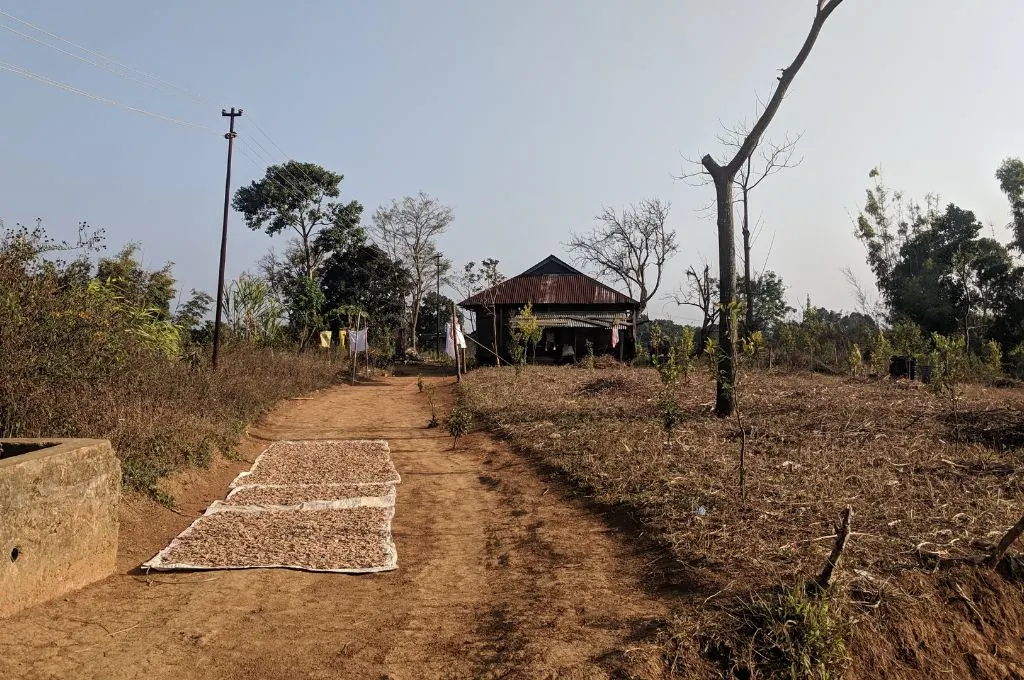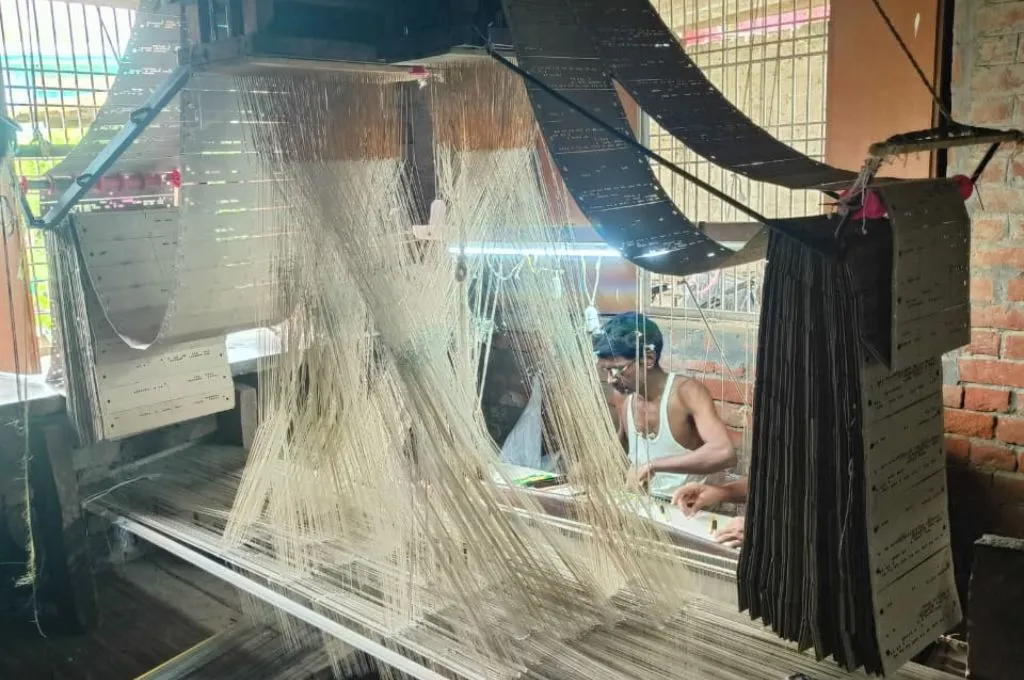READ THIS ARTICLE IN
How coastal women in Odisha are adapting to erosion

Since 2007, the sea has been slowly advancing on Podampeta, a fishing village in coastal Odisha where I am from. By 2011, rising tides and continuous erosion had split the original settlement into four fragments, eventually displacing approximately 475 households.
Most families were relocated under a government scheme that offered INR 3.5 lakh per household, but the move took them away from the shore—and with it, from their traditional livelihoods of small-scale fishing and fish drying. An annual seven-month fishing ban in Odisha as part of the state’s conservation efforts to protect nesting Olive Ridley turtles, combined with lack of proper infrastructure, puts their livelihood at further risk. The compensation of INR 15,000 for the ban period is not enough to sustain them, especially when there are no alternate jobs or proper infrastructure for dry fish processing.
I am engaged as a grassroots community leader and climate change ambassador with Voluntary Integration for Education and Welfare of Society (VIEWS), a nonprofit that focuses on livelihoods, education, climate resilience, WASH, and inclusion in the area. We work with fishing families, especially women, in coastal Ganjam to understand the everyday risks of climate change and find ways for adaptation.

To sustain themselves, some families now migrate seasonally to cities such as Bengaluru and Visakhapatnam. They usually do this as a group to find daily wage work. Children drop out of school and enter informal work early, and the parents often get trapped in cycles of debt with moneylenders. This is not different from my own life. My father, a fisherman, now migrates to coastal Kerala for work during the fishing ban.
With no access to the harbour or proper fish-drying facilities during the ban months, many rely on open-air drying. This period also coincides with high fish availability, making the restriction harder to cope with.
While the men migrate for work, the women who stay behind face another set of challenges. Dry fish processing, a traditional activity for many, has become more difficult due to poor facilities. Without proper sheds, salting tables, or drying racks, infections and rashes from fish handling are common. Access to cold storage is limited, and market linkages are weak. “We don’t have cold storage. By the time we reach the market, the fish starts to spoil. Middlemen pay us very little,” says B Elibudhi, a resident of Podampeta.
There are other gaps too. The community lacks access to safe docking jetties, resting places, and drinking water. Several women are unaware of fisheries-related schemes or are unable to access them due to documentation delays after displacement. Participation in planning processes such as GPDP remains low. Women from fishing communities, especially those displaced by erosion, are often excluded from village-level discussions around local development priorities. As a result, decisions such as seasonal fishing bans or relief allocations are made without their input, even though these policies directly impact their livelihoods.
There have been some attempts to bridge these gaps. These include the revival of solar dryers that allow women to hygienically dry fish and prevent spoilage during erratic weather or lack of open space. This is particularly crucial during the long fishing bans. A community-led early warning system, which uses local volunteers, mobile alerts, and public sirens to warn coastal residents of incoming cyclones and storms, has been developed. VIEWS is also training adolescent girls in the nearby villages on digital tools for alternative livelihoods.

But this is not enough, and there is a need for broader support—from infrastructure to market access to ensuring that displaced families and women fish workers are consulted in local planning, climate decisions, and fisheries management.
—
Know more: Learn how farmers in the Sunderbans are adapting to climate change.
Do more: Connect with the author at chpadu1998@gmail.com to learn more about and support her work.




